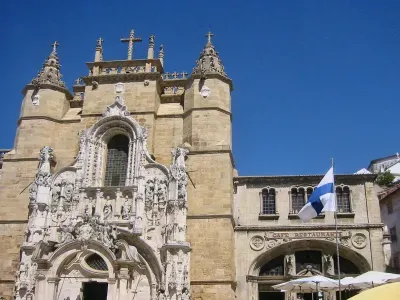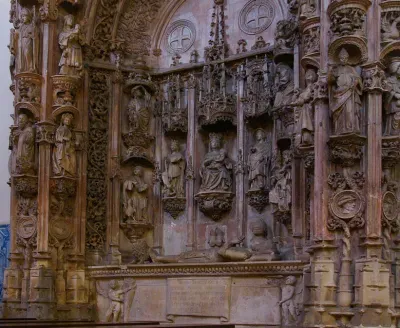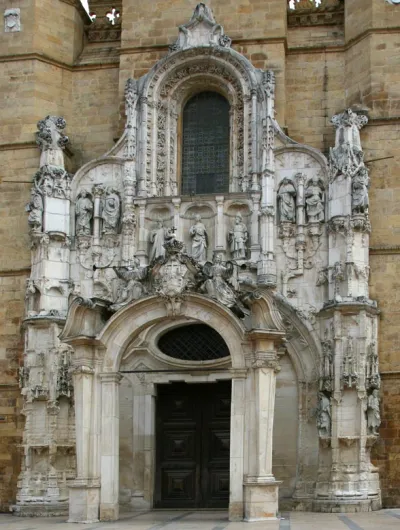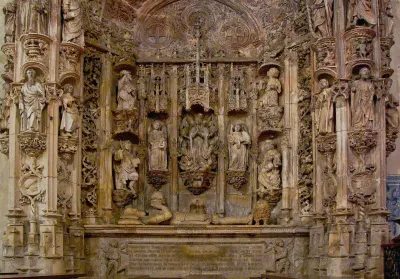
Igreja de Santa Cruz Rei-artur CC BY-SA
Tomb of King Sancho I 
Main façade 
Igreja Santa Cruz interior 
Tomb of Afonso Henrique Mosteiro de Santa Cruz, Coimbra
The Monastery or Church of Santa Cruz in Coimbra is rich in both architecture and history. Founded in 1131 by the canons of St Augustine the current building dates back to the 16th century and is a rich example of early Manueline styling.
Originally the monastery would have been a fairly simple Romanesque structure, although the order accumulated considerable wealth and influence. Such was its importance in the early days of Portugal that the first two kings, Afonso Henrique (1109-1185) and his successor Sancho I (1154-1211) were buried here. This makes the church another of Portugal's national pantheons.
It was the King Manuel who ordered the rebuilding of the monastery in the early 1500s. For the rest of the century many of Portugal's most respected artists and architects worked on completing the new building. Much of the early work, including the chapterhouse and cloisters, was carried out by Diogo de Boitaca, who also designed much of the Jeronimos Monastery in Belem. It is therefore unsurprising that the key style here is Manueline, and this continued with the following architect, Diogo de Castilho, who was responsible for designing the magnificent main entrance to the church.
In the 1520s the remains of the two kings were re-interred here and elaborate new tombs made by the famed French sculptor Nicolau Chanterene. Situated either side of the altar the two tombs mirror each other, and are both equally exquisitely detailed.
Also worthy of note within the main church is the 18th century Baroque pipe organ. Stunning as the 4,000 pipes are with their Japanese artwork, it is apparently so complex that barely anyone knows how to play it!
Address
Rua Martins de Carvalho, 3Coimbra3001-801Phone
239 822 941Attraction type

Coimbra travel guide »
In terms of historic significance and romantic beauty, Coimbra is second only to Lisbon and Oporto. Its ancient buildings cling to the side of the hill that rises above the curves of the river Mondego, the ornate buildings of the famous University of Coimbra are its crowning glory. Indeed the university is still the lifeblood of the city and the change in atmosphere is notable when the…